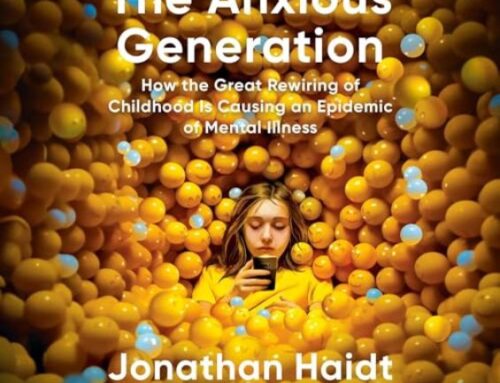My youngest daughter is fond of asking unanswerable questions like “what’s your favorite food?” or “who’s your favorite band?” I usually answer that I’m too old to have favorite anythings anymore, but she hasn’t asked me “who’s your favorite living movie director?” yet, and that would be easy to answer: Whit Stillman.
Stillman is an American who burst – in a polite, unprepossessing way – onto the independent film scene in 1990 with Metropolitan, a film about the rich in New York City shot, ironically, on a tiny budget, using borrowed apartments as sets. It would be the first in a trilogy of films, including Barcelona and Last Days of Disco, that chronicled a social class that was getting a lot less sympathy – white, moneyed Americans whose cultural and economic status was falling at home and all over the world.
Stillman made his reputation as a director of comedies of manners, which meant that his characters talked constantly, explaining their motivations and reactions in almost comically articulate dialogue that undercut the realism of his settings. There was a delay of over a decade before he made his next film, Damsels in Distress, which only departed from his earlier films by concentrating on a younger, less uniformly white cohort from the upper middle class.
Stillman’s trademark dialogue had gotten even more arch and mannered, and his characters even more anxious about their status, especially in a college environment where class and gender had become social third rails and their economic future was even less assured. It was while watching the film that I remembered how I’d first seen the phrase “downward mobility” 20 years earlier, on a poster for Metropolitan.
Still struggling to get his films made, Stillman made The Cosmopolitans, a pilot for Amazon, that was never turned into a full series. Just a half hour long, it distilled his themes into a nervous little playlet as his cast of attractive actors, some young, some not quite so, performed elaborate and wordy courtship rituals that also probed their uneasy social standing with each other, in the apartments, cafes, and subways of Paris.
This summer Stillman released the film he was probably born to make – an adaptation of an obscure Jane Austen story called Love & Friendship, featuring the two female leads from Last Days of Disco (Chloe Sevigny and Kate Beckinsale) as a pair of social schemers in the townhouses and country homes of Regency Britain.
Stillman has admitted that he resisted Jane Austen for years until he realized how well what he did suited her worldview, and to that end he has published a novelization of Love & Friendship, which isn’t so much a re-write of “Lady Susan,” Austen’s original novella, as much as it’s a bonus feature for the movie – a besotted relation of Beckinsale’s scheming Susan taking issue in print with how her aunt was portrayed by Austen (and Whitman).
If you’re expecting the put-upon romantic heroines of previous Austen movie adaptations you’re in for a surprise here. The closest we get to that is Susan’s daughter Frederica, who seems quite insipid next to her charming but immoral mother, in that way virtue often looks unglamorous next to evil. Even if you’re a Stillman fan it takes a few minutes to acclimatise to the arch wordplay and obscure motivations of the characters onscreen, and to figure out whose interpretation of events is untrustworthy, and by how much.
After that it becomes endlessly rueful, and the best scenes are stolen by Tom Bennett as Sir James Martin, a very eligible bachelor and nearly perfect idiot who, when told that God made ten, not twelve commandments, delightedly tries to choose which two he’s been allowed to discard.
As someone whose love of movies has been sorely tested and diminished by spending three decades writing about them, there’s no small joy in knowing that one of your favorite directors is still working and following his distinct muse into interesting places. Even if it might take a decade between films, at least I can anticipate a new Stillman movie at intervals as long as my eyesight and hearing hold out.
As a professional photographer, I took Stillman’s portrait twice, the first time around the release of Metropolitan, in the stairwell of an old building in downtown Manhattan, the second time eight years later in a hotel room in Toronto, when the effort of making his trilogy had clearly worn him out and the long pause before his next film was about to commence. He was polite and well-spoken and utterly ill at ease in front of my camera.
I’ve tried to figure out just why I connected with Stillman’s movies so early and so strongly. It can’t be some class recognition, since I grew up working class, and couldn’t help but regard the people in Stillman’s movies as very nearly as exotic as the tuxedoed and gowned debutantes and society types in a Fred Astaire/Ginger Rogers movie.
At first it was their candour and articulate banter I adored, and I once imagined that the world might be a better place if people could talk about their anxiety and motivation this frankly. (I’ve since discarded this youthful optimism; feelings, honestly expressed, aren’t necessarily truthful or factual. It took a while to figure out that most of the characters in his films seemingly applying for the position of narrator were less than reliable. So it is with life.)
In the end it’s because, almost alone among filmmakers today, Stillman is still making comedies of manners, and the important part isn’t the comedy as much as the manners. They might hold each other in contempt or try to use each other, but Stillman’s films are still full of people who act as if a base level of politeness is how society works, and that the point when we abandon that is where comedy ends and horror begins.





